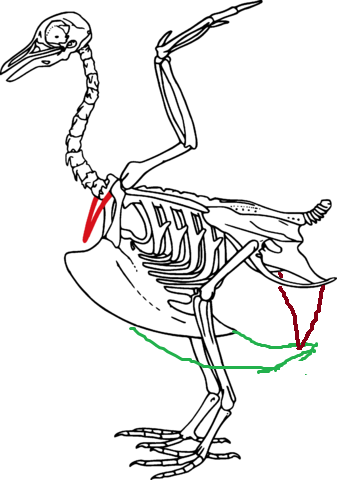I've been designing bird-like creatures that both fly and walk using their legs, saving the trouble of growing extra muscle mass for both. Because of this they have an odd look for birds: They have scrawny upper bodies sitting on top of muscular waists with feathered legs. What would be their wings have no use in flight and have instead been converted to tiny bird hands with talons. They walk on two toes like ostriches and third toe from which their primary flight feathers grow, this toe is bend upwards when walking.
Because of the way they fly their flight muscles aren't located on the torso and they don't have a keel. Their pelvis and leg muscles are adapted for the mechanical demands of flight and the muscles use the same rope-and-pulley system as ordinary birds. This gives them more room to flap their wing-legs and focuses their centre of gravity ventrally for stability during flight. My previous question was about how they fly, if you have a related comment put it there.
The problem that's been pointed out to me is that the eggs would break in the uterus due to the mechanical stress of flight. This could prove to be a problem. Any ideas? (Besides flying normally or not at all.)
EDIT: As was mentioned in the answers eggs have high compressive strength but I’m also worried about egg formation.

